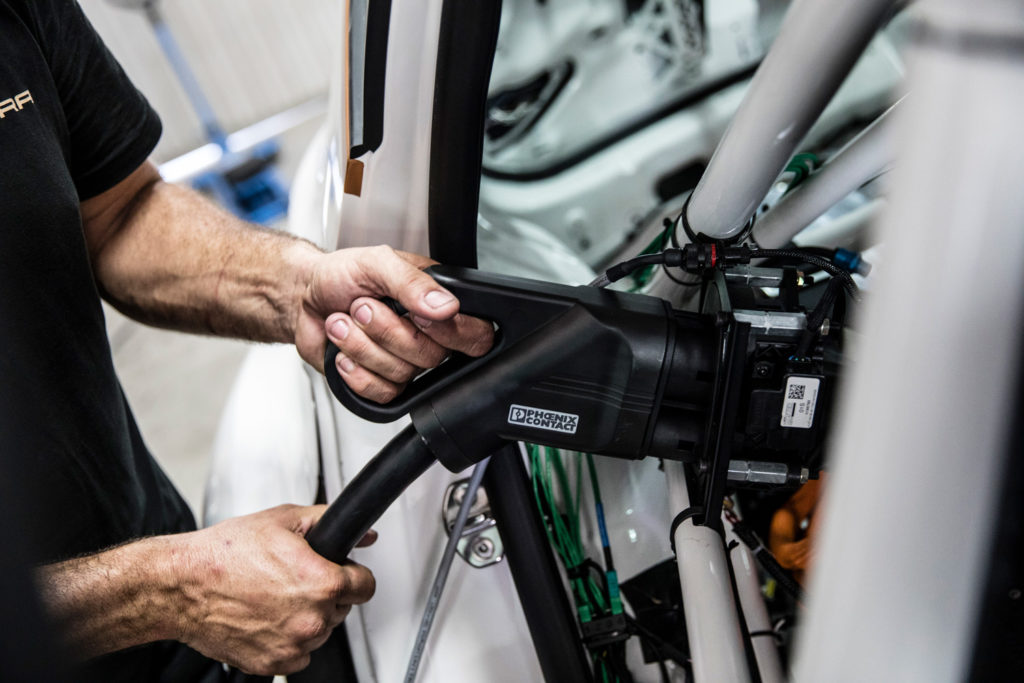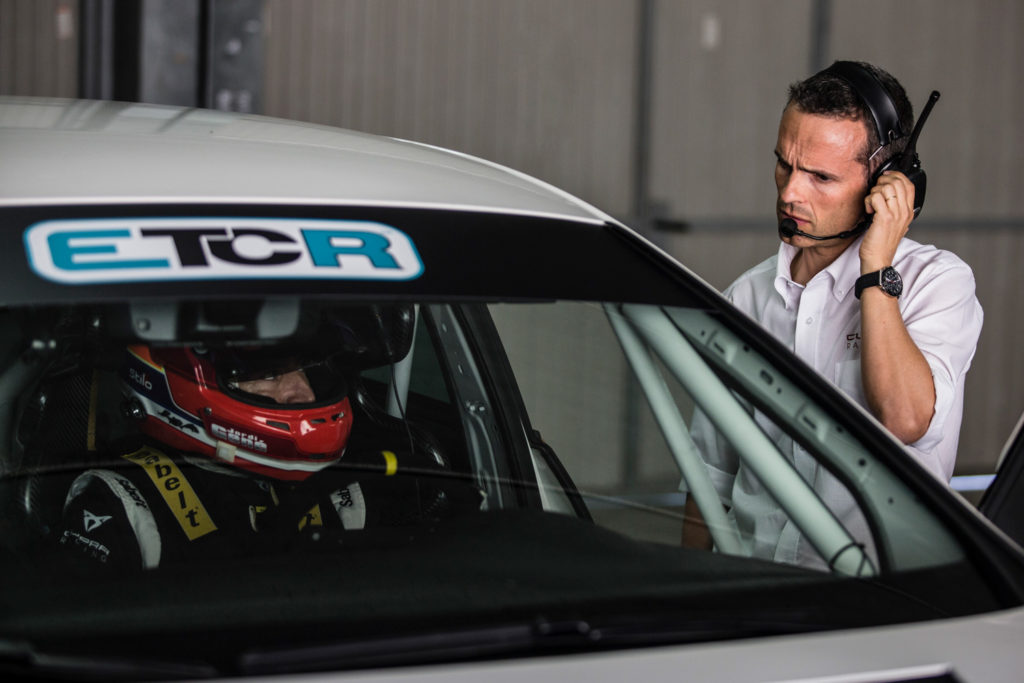The Cupra e-Racer is undergoing extensive testing ahead of its expected debut in Electric Touring Car Racing series (ETCR) in 2020. Having developed the first-ever electric touring car, the Cupra team is continuing to finesse the vehicle itself – capable of 270km/h from its 500kW motor – while adapting to new demands on driver, mechanics and engineer.
“The driving style is completely different and now you have to use other parameters in order to know at what speed you’re driving, how to negotiate a corner or the right time to brake,” said Cupra driver and ambassador Jordi Gené.
For example, this vehicle’s greater weight and different sound from the motor change the driving references when racing. As it can reach 100km/h in 3.2 seconds, the “feeling of acceleration of the e-Racer is much more forceful, and the adrenaline rush is even bigger,” said Gené.
During testing laps, a dash light displays a warning that Gené has to return to the pits to cool the battery. Cooling it down with dry ice is one of the mechanic’s roles. The engineers also have new strategies on their hands. “It’s not just about being the fastest; now we have another factor to consider: energy management. We must learn how to monitor the temperature and the range,” explained team leader Xavier Serra.
In this sense, positioning the 450kg battery was one of the biggest challenges when developing the e-Racer. The team had to distribute the volume of the battery evenly underneath the car in order to maintain its balance and functionality.
“After working for more than 20 years in this profession I never would have thought I could charge up a race car with a plug”, added Cupra mechanic Jordi Martí. Now he has a set of specially designed instruments to withstand high voltage, such as gloves made with insulating material that can resist up to 1,000V.
The tests carried out on different tracks aim to confirm the competitiveness of the Cupra e-Racer, which is expected to make its debut in the ETCR category in 2020.





